
Do you have a question about the Cisco Aironet 2700 Series and is the answer not in the manual?
| Model | Cisco Aironet 2700 Series |
|---|---|
| Category | Wireless Access Point |
| Wireless Standards | 802.11a/b/g/n/ac |
| Frequency Band | 2.4 GHz and 5 GHz |
| Data Transfer Rate | Up to 1.3 Gbps |
| Mounting Type | Ceiling, Wall |
| Ethernet Ports | 1x 10/100/1000BASE-T |
| Power Options | 802.3af/at PoE |
| Antenna Type | Internal |
| PoE Support | Yes |
| Operating Temperature | 0°C to 40°C (32°F to 104°F) |
| Security Features | 802.1X, WPA/WPA2 |
| Management | Cisco Prime Infrastructure |
Covers theory of operation and installation of Cisco 3700 Series Access Points.
Details the Cisco 3700 Series Access Point models and their capabilities.
Explains the 'i', 'e', and 'p' series models based on their design and use cases.
Highlights visual differences in the mechanical front of AP 3700 and AP 3600.
Explains AP 3700e's native 802.11ac support and feature module slot usage.
Details the WSSI module's functionality for spectrum analysis and security.
Describes the 802.11ac Wave-1 option module for the AP 3600.
Explains AP 3700's ClientLink 3.0 support for 802.11ac and legacy clients.
Details AP 3600's ClientLink 2.0 and ECBF for 802.11n and 802.11ac.
Compares key features like data rate, radios, beamforming, and modules.
Discusses physical dimensions and interchangeability of mounting options.
Provides mechanical drawings and dimensions for AP 1600, 2600, and 3600.
Provides drawings and discusses installation options and bracket choices for AP 3700.
Details low-profile and universal brackets for ceiling installations.
Explains different ceiling clips and channel adapters for grid mounting.
Details using optional bracket for mounting APs directly into ceiling tiles.
Discusses signal obstruction, antenna choice, and AP orientation for wall mounting.
Details AP design suitable for clean room environments and their features.
Discusses installing APs above ceiling tiles for aesthetics or security.
Mentions third-party T-Bar hangars for mounting APs above ceiling tiles.
Recommends NEMA enclosures for harsh environments like stadiums.
Provides guidance on installing APs above ceiling tiles to avoid obstructions.
Advises checking coverage at full stock levels in warehouses for accurate surveys.
Discusses AP placement and antenna types for warehouse aisles.
Recommends CAT6a cabling for new installations adhering to 10GE standards.
Advises keeping antenna cable runs as short as possible for optimal performance.
Recommends spacing APs apart to avoid channel interference and degradation.
Guide for designing WLANs for high-density client environments.
States that Cisco does not recommend or certify Wi-Fi over DAS deployments.
Outlines responsibilities of DAS vendors for coverage and RF issues.
Discusses challenges of achieving elevator coverage and following local regulations.
Lists available dual-band antennas for specific AP models.
Recommends "P" series antennas for outdoor deployments in the US.
Mentions high-gain antenna for stadium applications with FCC approval.
Advises using Cisco antennas whenever possible for optimal performance.
Lists technical specifications for the AIR-ANT2524Dx-R dual-band dipole antenna.
Shows radiation patterns for the AIR-ANT2524Dx-R dipole antenna.
Details specifications for the 4-element dual-band patch antenna.
Displays radiation patterns for the patch antenna.
Lists specifications for the 4-element dual-band omni antenna.
Shows radiation patterns for the omni antenna.
Details specifications for the 4-element MIMO omni antenna.
Displays radiation patterns for the dual-band omni antenna.
Describes a high-gain antenna option for stadium deployments.
Lists specifications and mechanical details for the AIR-ANT2513P4M-N antenna.
Explains AP 3600's support for 3SS and beamforming.
Lists supported MCS rates for AP 2600/3600 and AP 1600.
Discusses the increasing prevalence of 3SS clients and their performance impact.
Describes ClientLink 1.0 and 2.0 functionality for legacy and 802.11n clients.
Compares ClientLink 2.0 with IEEE Enhanced Beam Forming (EBF).
Explains constructive and destructive interference in beamforming.
Visually compares ClientLink 1.0 (1SS) and ClientLink 2.0 (3SS).
Details AP 3600/3700's ability to beamform to 3SS clients.
Summarizes ClientLink 3.0 (AP 3700) and ClientLink 2.0 (AP 3600) capabilities.
Explains the value and differences between ECBF and ClientLink 3.0.
Discusses site survey considerations related to AP cell sizes and ClientLink.
Shows typical cell sizes and ranges for AP 3600 site surveys.
Provides sensitivity and SNR data for different MCS indexes and spatial streams.
Presents RSSI/SNR guidelines for different data rates and channels.
General advice on AP placement close to users and avoiding metal objects.
Discusses channel usage and reuse strategies for 2.4 GHz and 5 GHz bands.
Advises checking client coverage with various client devices.
Recommends verifying coverage using the worst-performing clients.
Details new features and functionality of 802.11ac Wave-1.
Describes 80 MHz channel bonding in 802.11ac for increased throughput.
Discusses AP 3600 802.11ac module limitations and ClientLink synergy.
Explains 802.11ac's introduction of 256-QAM and its MCS rates.
Explains 80 MHz channel bonding in 802.11ac for increased bandwidth.
Discusses why channel bonding is important for achieving faster speeds.
Shows typical Wave-1 data rates for 2 and 3 spatial streams.
Lists features and explains the operation of the AP 3600 802.11ac radio module.
Details Cisco switch PoE support for AP 3600 modules via different PoE standards.
Illustrates powering options for the AC radio module with low power PoE.
Explains how the AP 3600e module antennas operate omni-directionally.
Advises on wall mounting AP 3600e with modules and antenna types.
Details how the integrated and module radios work together as a blended radio.
Discusses client band steering and its advantages.
Explains AP 3600's virtual or blended radio operation with modules.
Explains how to identify client associations via Slot ID in the controller.
Lists common issues with AP module installation and configuration.
Provides steps to diagnose if the module is not recognized by the AP.
Lists caveats for clients connecting to the 802.11ac module.
Lists features not supported by the 802.11ac module (MFP, CCX, IAPP).
Details the AP 3700's architecture, ClientLink 3.0, and metal shielding.
Explains AP 3700 powering via PoE, local power, or injectors and modes.
Discusses AP 3700 functionality with lower PoE budgets like 15.4W.
Clarifies compatibility between PoE injectors and APs/modules.
Shows AP 3700 in medium power mode (15.4W), conserving power.
Shows AP 3700 in full power mode with adequate power supply.
Table showing Cisco switch PoE support for 3700 APs and modules.
Discusses 802.11ac channel availability and 80 MHz bonding in the US.
Shows the current FCC channel allocation plan for the US theater.
Shows channel allocation plans for ETSI and Japan regions.
Discusses future spectrum allocation and potential channel increases.
Summarizes proposed channel plans and considerations for 80 MHz bonding.
Explains how channels and bonding affect client connectivity and speed.
Shows an example of a 2-stream client bonded at 80 MHz.
Advises setting AP channel width to 80 MHz for 80 MHz client links.
Shows how to configure AP 3700 channel and width via the controller.
Details hardware/software configurations for interoperability testing.
Lists laptops and clients tested for interoperability with Cisco APs.
Lists integrated and USB clients supporting 802.11ac.
Lists Ethernet bridges supporting 802.11ac.
Discusses variables like drivers, ports, and bandwidth affecting performance.
Details 802.11ac clients, streams, DFS, and driver versions.
Advises checking spectrum for Wi-Fi and non-Wi-Fi interference.
Discusses client interface type and spatial stream impact on performance.
Explains how distance affects modulation maintenance for 256 QAM.
Compares 11n and 11ac modulation and 80 MHz channel bonding.
Advises on AP placement for close-in tests and general mounting best practices.
Shows examples of non-optimal AP installations to avoid.
Illustrates poor installations near metal and clutter.
Shows incorrect patch antenna mounting against a metal fence.
Explains how metal clutter creates multipath and degrades performance.
Emphasizes mounting APs level and securely, away from metal objects.
Shows poor installation with AP too high and buried in conductive foil.
Explains correct dipole antenna orientation for vertical polarity.
Illustrates reduced coverage due to incorrect dipole antenna orientation.
Advises mounting outdoor antennas with wires down and not obstructing drain holes.
Reiterates mounting outdoor antennas with leads DOWN to prevent water entry.
Recommends Coax-Seal for weatherproofing antenna connectors.
Lists key features of the Cisco Aironet 2700 AP, including 802.11ac.
Notes that AP 2700 lacks module support compared to AP 3700.
Provides an overview of Cisco Aironet indoor AP series, including AP 2700.
Shows physical identification of AP 2700, 2600, 3600, and 3700 models.
Lists standard operating modes supported by Cisco Access Points.
Highlights Enhanced Local Mode and wIPS support on AP 2700.
Details the AUX port's function, limitations, and PoE requirements.
Shows the AP 2700 ports: CONSOLE, AUX, and PoE.
Details power requirements for AP 2700 and AUX port status indicators.
Lists available Cisco mounting brackets: Bracket-1, Bracket-2, Flush Mount.
Shows physical dimensions of AP 2700e models.
Lists supported antennas and their gains for the AP 2700.
Displays Azimuth and Elevation patterns for AP 2700i at 5 GHz.
Displays Azimuth and Elevation patterns for AP 2700 at 2.4 GHz.
Shows heat maps comparing AP 2700, 3700, 2600, and 1600.
Recommends AP models for manufacturing and warehouse environments.
Compares Cisco power injectors AIR-PWR-INJ5 and AIR-PWR-INJ4.
Lists interference sources and AP 3600 module power draw.
Details 802.11ac requirements and AP 3600 radio operation with modules.
Discusses how 5 GHz radios work together on the same channels.
Provides links to Cisco antenna datasheets and reference guides.
Provides a guide to understanding antenna patterns.
Provides links to datasheets for APs and Controllers.
Links to guides for WLAN design, deployment, and high-density environments.
Links to resources on 802.11ac technology, use cases, and modules.
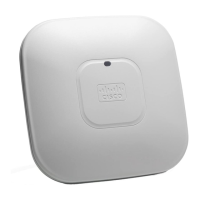
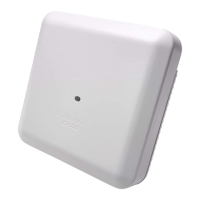



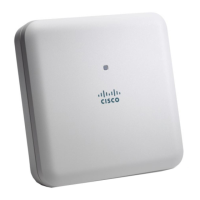
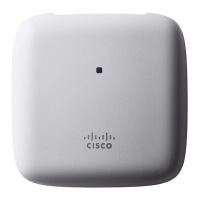

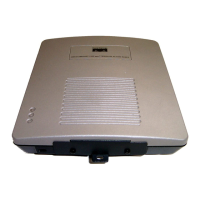


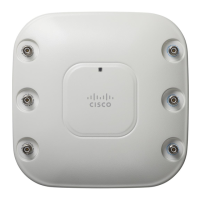
